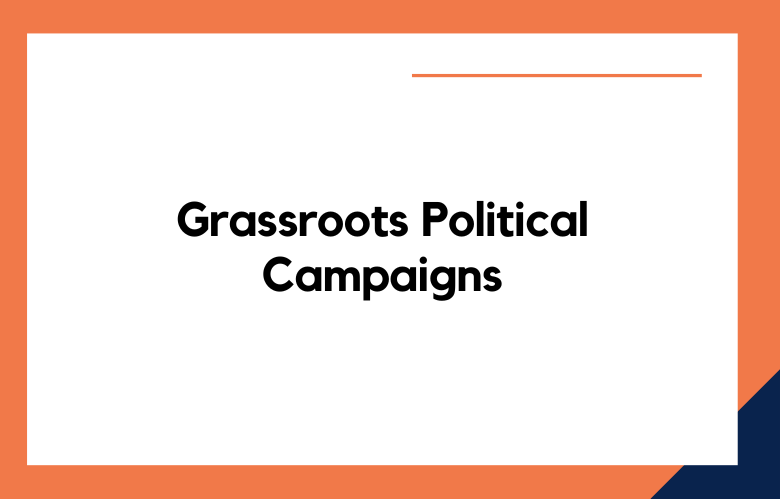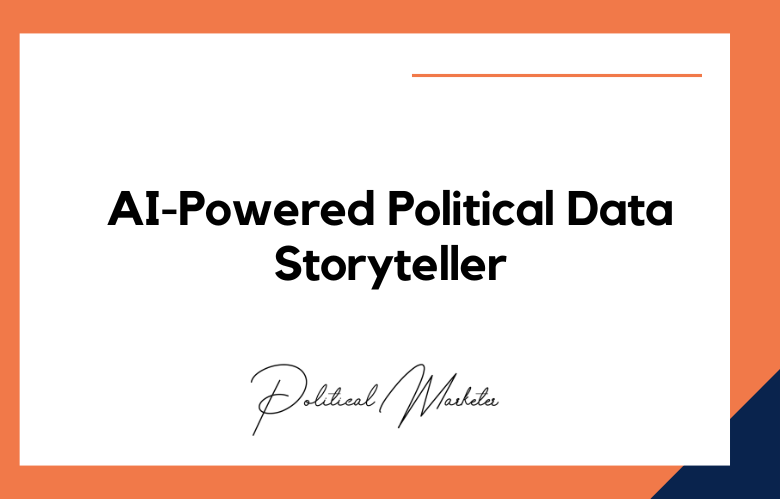In today’s world, activism and political engagement have become increasingly important for people who want to protect their rights and stand up for their beliefs. One of the most effective ways to do this is through grassroots campaigns, where ordinary citizens band together to create change. But how can the power of the people be harnessed through these campaigns?
One answer is through video advocacy. We will explore video advocacy and how it can promote social and political change.
Why is Video Advocacy Powerful?
Video advocacy is powerful because it has the unique ability to bring people together and connect them emotionally. Compelling videos help people understand complex issues by conveying them in a way that is easy to understand and relatable.
Moreover, videos can be shared widely and rapidly on social media, which makes it easy to campaign for a particular issue. Video advocacy enables people to share their stories in a way that moves others, and when people are forced, they are often motivated to take action.
How Video Advocacy Works
Video advocacy can take many forms, from public service announcements to documentaries. The key is to create engaging content informing viewers about the issue.
One of the most effective methods of video advocacy is through social media, where videos can be shared widely and quickly. Video can capture protests and other forms of civic engagement, allowing those unable to attend to participate virtually.
Through video advocacy, grassroots campaigns can reach a wider audience and have a more significant impact. Using compelling visuals, storytelling, and music, videos can make an issue more relatable and relevant to the viewer.
This emotional connection can then result in increased engagement and action. Video advocacy can mobilize people to vote, participate in protests, or contact their elected officials.
Understanding Video Advocacy
Video advocacy is using videos to raise awareness and create change. The power of video cannot be denied, as moving images can evoke emotions and capture attention.
Video advocacy can address various issues, from environmental concerns to societal injustices. It is a powerful tool for grassroots campaigns because it amplifies the voices of those often ignored by mainstream media.
Video advocacy empowers ordinary people to share their stories and experiences compellingly, and it can create a ripple effect that inspires others to take action.
Success Stories of Video Advocacy in Political Campaigns
Video advocacy has been used in many successful political campaigns. In 2008, the Obama campaign released a video that showcased the story of a veteran who had lost his job and health insurance.
The video went viral and helped to humanize the issue of healthcare reform. In 2016, the Bernie Sanders campaign used video advocacy extensively to mobilize young voters and create a sense of momentum. The campaign’s online presence was built mainly through the use of videos.
Grassroots Political Campaigns and Video Advocacy:
Grassroots political campaigns have adopted video advocacy to reach a broader audience. Through high-quality video content, political campaigns can create awareness and inspire people to take action.
It is an excellent way to engage younger audiences and can be a game-changer in elections. Politicians and campaigners can use videos to inform the public about their policies and beliefs, showcase their commitment and passion towards a particular issue, and humanize themselves in the eyes of their constituents.
The Power of Video Advocacy in Grassroots Political Campaigns
With the rise of social media and the increasing accessibility of technology, it has become easier for grassroots political campaigns to take shape. One form of political campaigning that has become increasingly popular is video advocacy.
But what is video advocacy, and how does it work? We will explore the power of video advocacy in grassroots political campaigns. Videos can showcase the campaign’s values, beliefs, and mission while building trust and a sense of community.
Videos can also increase visibility and reach a larger audience. Political campaigns need a solid online presence, and video advocacy is powerful.
Getting Involved in Video Advocacy
Many resources are available if you’re interested in video advocacy. You can start by joining a grassroots campaign that aligns with your values, environmental activism, or social justice.
Learn the basics of video production and use your creativity to craft compelling content that moves people to action. Use the power of social media to share your videos and amplify your message.
Inspiring Examples Of Successful Video Advocacy Campaigns
Videos have become an excellent means of spreading awareness and advocating for important causes. They capture the audience’s attention and have the power to spark emotion and inspire action.
Through storytelling and real-life experiences, video advocacy campaigns have proven to be successful in creating change. We’ll examine some of the most impactful and successful video advocacy campaigns.
“The Talk” – Procter & Gamble
In 2017, Procter & Gamble’s ad campaign “The Talk” went viral. The video depicts black parents having “the talk” with their children, warning them about the racism they’ll encounter and teaching them how to handle it.
The ad campaign aimed to initiate a meaningful conversation about racial biases and discrimination. It raised awareness and inspired people to take action against racial discrimination.
“I am a witness” – Ad Council.
The Ad Council’s “I am a Witness” campaign focused on addressing cyberbullying—the video advocates for standing up against bullying and being a witness for those suffering.
The campaign focused on the idea that silence is complacency, encouraging everyone to speak up and take action against cyberbullying.
“Dumb Ways to Die” – Metro Trains Melbourne
Metro Trains Melbourne’s video campaign, “Dumb Ways to Die,” depicted cartoon characters in a humorous manner dying in some careless ways, which aimed to address railway safety in a fun and educational way.
The video created a buzz and now has over 200 million views on YouTube. The campaign was so successful that it became a complete franchise of games, merchandise, and even a safety app.
“Bulldozer” – Greenpeace
The Greenpeace campaign “Bulldozer” aimed to bring awareness to the destruction of forests caused by companies that buy palm oil from corrupt suppliers.
The video depicted an orangutan wandering into a city for safety, highlighting deforestation’s impact on wildlife.
The campaign generated public pressure against the companies involved in the palm oil industry and forced them to adopt sustainable production practices.
“The Gun Violence History Book” – States United to Prevent Gun Violence
The United States to Prevent Gun Violence’s campaign “The Gun Violence History Book” aimed to create awareness about gun violence in America using children’s book format.
The video depicted children reading stories about horrendous gun violence incidents in America. The campaign shed light on the issue of gun violence in America, and it encouraged people to advocate for gun control.
Conclusion:
Video advocacy is a powerful tool for promoting grassroots political campaigns. It empowers ordinary people to share their stories and experiences compellingly and can reach a broad audience through social media.
By creating engaging and informative videos, activists can inspire others to stand up for their beliefs and create change in the world. If you’re looking for a way to get involved in grassroots activism, video advocacy is a great place to start.
Call: +91 9848321284
Email: [email protected]
Video Advocacy: The Power of Grassroots Political Campaigns: FAQs
What Is Video Advocacy In Political Campaigns?
Video advocacy involves using visual storytelling to promote political causes, mobilize communities, and influence public opinion at the grassroots level.
How Does Video Advocacy Support Grassroots Campaigns?
It amplifies local voices, documents real-life issues, and humanizes policy demands, making the campaign message more relatable and emotionally compelling.
Why Is Video More Effective Than Text In Political Messaging?
Videos combine visuals, sound, and emotion, increasing viewer engagement, retention, and shareability across digital platforms.
Can Grassroots Campaigns Produce High-Impact Videos Without Big Budgets?
Even smartphone-shot videos can go viral if the message is authentic, the narrative is strong, and the call-to-action is clear.
What Types Of Stories Work Best In Grassroots Political Videos?
Personal testimonials, community struggles, protest coverage, candidate introductions, and behind-the-scenes organizing resonate well with viewers.
How Do You Structure A Political Advocacy Video?
Effective videos have a hook, an emotional or informational core, and a powerful call to action that motivates viewers to engage or take the next steps.
What Platforms Are Ideal For Distributing Advocacy Videos?
Depending on the audience and message type, YouTube, Instagram, Facebook, WhatsApp, and regional platforms are effective.
Can Video Advocacy Be Used To Influence Policy?
Well-crafted videos can draw media attention, sway public discourse, and pressure policymakers through visual evidence and viral support.
How Do Campaigns Measure The Impact Of Advocacy Videos?
Metrics include views, shares, engagement rate, click-throughs to petitions or websites, and qualitative feedback from target communities.
What Are Common Mistakes In Grassroots Video Campaigns?
A video’s effectiveness can be reduced by a lack of clarity, poor audio quality, missing subtitles, or failing to align the message with the target audience.
How Can Campaigns Maintain Authenticity In Video Content?
Authenticity can be preserved by featuring real people, using natural settings, and avoiding overly scripted or corporate-style production.
What Role Does Emotion Play In Advocacy Videos?
Emotion drives connection and action, whether anger over injustice or hope for change, emotional content motivates viewers to support a cause.
Should Advocacy Videos Include A Call-To-Action?
Absolutely. Every video should prompt the viewer to do something: sign a petition, attend a rally, vote, or share the message.
Can Video Advocacy Mobilize First-Time Voters?
Yes, mainly when it includes peer-to-peer stories or community voices that address the concerns of disengaged or skeptical citizens.
Are There Legal Or Ethical Concerns In Advocacy Videos?
Yes, campaigns must obtain consent for filming, avoid defamation, and stay compliant with the election commission or platform-specific guidelines.
How Can Campaigns Collaborate With Influencers For Video Advocacy?
Local influencers can amplify the message through co-created content, endorsements, or by appearing in advocacy videos that align with their values.
What tools help create grassroots political videos?
Tools like Canva, InShot, Adobe Premiere Rush, and mobile editing apps allow grassroots teams to create high-quality content.
How Often Should A Grassroots Campaign Post Videos?
Frequency depends on the strategy, but consistent posting during campaign peaks (e.g., pre-election weeks or during protests) maximizes reach.
What Is The Role Of Subtitles In Political Videos?
Subtitles improve accessibility, especially in multilingual communities, and ensure the message reaches audiences even with sound off.
Can Short-Form Videos Be As Effective As Long-Form Documentaries?
Yes, short-form content under 60 seconds often performs better on social platforms and can still deliver powerful, actionable messages.











